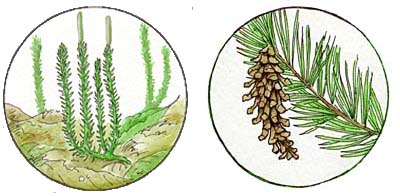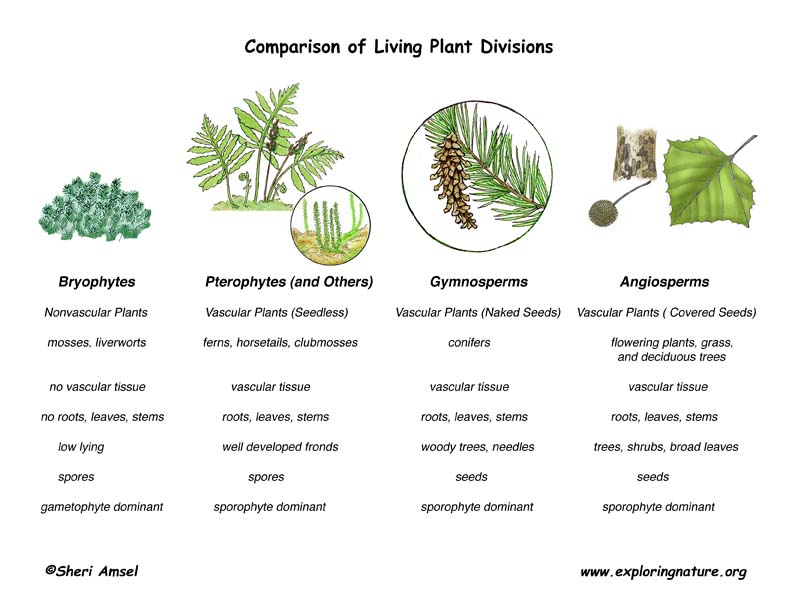

Plants are broken down into two main groups - vascular and nonvascular plants.
Nonvascular plants include the mosses, liverworts and hornworts. These are also called bryophytes. They are small, short plants found in wet places. Their gametophyte generation dominates. The sporophyte generation grows from it and depends on it for food.
Vascular plants make up about 80% of all plants. They have special tissues in their stems to move water and nutrients up and down the plant. This allows the plant to grow to a much larger size. They are also characterized by their reproductive phase. In vascular plants, the sporophyte generation is dominant.
Vascular plants are broken down into three groups:
Use the following poster and charts to help illustrated the difference between vascular and nonvascular plants.

